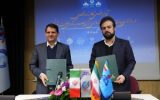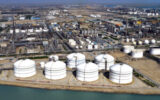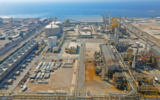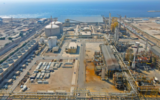
The CEO of the National Petrochemical Industries Company considered HSE an organizational value and said: "Decisions related to this area must be made in an integrated manner and in line with national interests."

Today, one of the cooling fans of Abadan Petrochemical Unit 200 caught fire.

The CEO of the National Petrochemical Industries Company announced the focus of petrochemical companies on reducing gas consumption in the three northern provinces of the country and said: It is estimated that during the period of several months of implementation of the programs, approximately 2 million cubic meters per day will be achieved in reducing consumption and help in the sustainable supply of petrochemicals.

The implementation of the campaign to reduce gas and electricity consumption by 10% for the second consecutive year was held on Sunday, December 30, 1404 with the signing of a joint memorandum between the National Petrochemical Industries Company and the Zagros Petrochemical Company.

Persian Gulf Petrochemical Industries Holding, as the second largest petrochemical holding in the Middle East and the largest player in this industry in Iran, plays a key role in meeting domestic needs and the international standing of this industry, with more than one-third of the nominal capacity of the country's petrochemical industry.

Located in the heart of the South Pars energy region, Hengem Petrochemical has not only become one of the largest producers of ammonia and urea in the country, but also, with the completion of its new phases, is ready to play a more important role in Iran's food security and foreign exchange earnings.

Kimia Pars Middle East Company, one of the important players in Iran's petrochemical industry, has achieved an influential position in recent years in the fields of foreign exchange earning, sustainable production, and development of global markets, relying on methanol production and 100% export of its products.

Sakhvat Asadi, CEO of the Pars Energy Special Economic Zone, stated at the opening ceremony of the exhibition: "Asaluyeh, as the beating heart of Iran's energy industry, is hosting an event that can strengthen the domestic supply chain and pave the way for the development of new technologies."

The CEO of the National Petrochemical Industries Company pointed to the annual need for about $2 billion in foreign equipment in the industry and emphasized: With middle managers' trust in the capabilities of domestic companies and manufacturers' commitment to quality and delivery time, Iran can be turned into a large construction workshop.

The Vice President of Development and Business of the Persian Gulf Petrochemical Industries Company said: "Continuing the operation of old petrochemical industry units that are 60 years old, without modernization and technological upgrading, will remove them from the cycle of global competition and even profitability."










